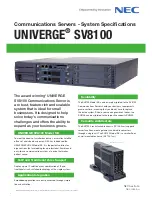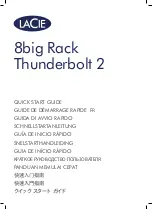
661 Brea Canyon Rd., Suite 3
Walnut, CA 91789
tel: 909.598.7388, fax: 909.598.0218
© Copyright 2009 Acnodes, Inc.
All rights reserved. Product description and product specifications
are subject to change without notice. For latest product information,
please visit Acnodes’ web site at www.acnodes.com.
RMC 7182
1U Rackmount System
2. Your server system may have come with system memory already installed. Make sure all DIMMs are
fully seated in their slots. For details on adding system memory, refer to Chapter 5.
3. If desired, you can install add-on cards to the system. See Chapter 5 for details on installing PCI add-on
cards.
4. Make sure all power and data cables are properly connected and not block- ing the chassis airflow.
See Chapter 5 for details on cable connections. Also, check the air seals for damage. The air seals are
located under the blower fan and beneath the frame cross section that separates the drive bay area from
the serverboard area of the chassis.
2-6
Checking the Drive Bay Setup
Next, you should check to make sure the peripheral drives and the Serial ATA drives and Serial ATA
backplane have been properly installed and all essential connec- tions have been made.
Checking the Drives
1. For servicing the hard drives, you will need to remove the top chassis cover.
2. If you need to remove or install hard drives, please refer to Chapter 6.
Checking the Airflow
1. Airflow is provided by four 4-cm counter-rotating fans. The system component layout was carefully
designed to direct sufficient cooling airflow to the compo- nents that generate the most heat.
2. Note that all power and data cables have been routed in such a way that they do not block the airflow
generated by the fans.
Providing Power
1. The last thing you must do is to provide input power to the system. Plug the power cord from the power
supply unit into a high-quality power strip that of- fers protection from electrical noise and power surges. It is
recommended that you use an uninterruptible power supply (UPS).
2. Finish by depressing the power button on the chassis control panel.















































